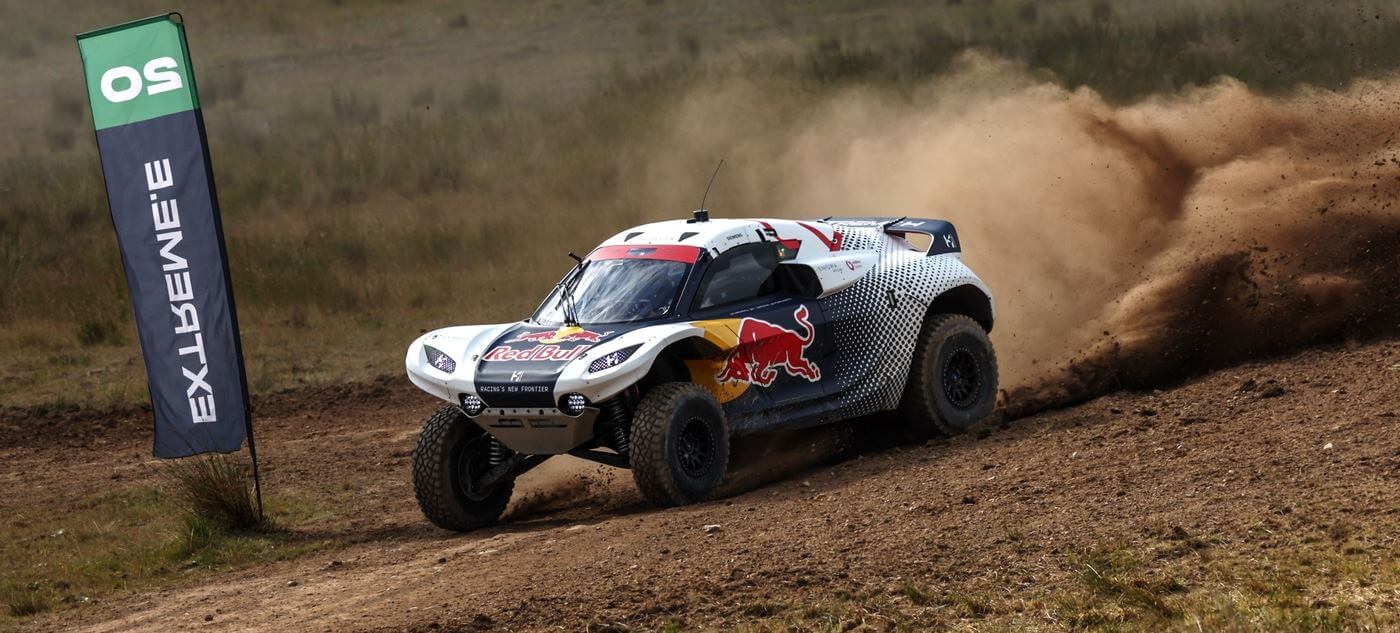Extreme E becomes Extreme H: goodbye charging, hello hydrogen buggy!
By RobinB on 08 July 2025 MiscellaneousIn 2021, the Extreme E competition arrived with a striking concept: 100% electric buggies designed for the toughest terrains, aiming to prove that zero emissions could also rhyme with off-road spectacle. Four seasons later, the series is turning the page: it will be called FIA Extreme H starting in 2025 and will switch from batteries to hydrogen 💧
Same television format, same mixed driver-co-driver pairs, but a completely renewed technological message: proving that a fuel cell can deliver 550 hp, handle the worst tracks—and above all, refuel in just a few minutes, whereas electricity required long recharging times ⏳
This transition is not just a fuel change; it’s a change of course: from an “EV-awareness” showcase to a full-scale testing ground for the hydrogen economy that the FIA and industrial partners want to accelerate.
A quick reminder: what is Extreme E?
Launched in 2021 by Alejandro Agag (also the creator of Formula E), Extreme E brings together electric SUVs on temporary off-road tracks set up in threatened ecosystems: the Arabian desert, Senegalese coasts, Greenland’s glaciers, the Amazon rainforest… The idea is twofold: to offer a mini-Dakar style show and to turn the cameras on the effects of climate change. Each team must include one male and one female driver; they switch mid-race after a 45-second stop called the “Switch.” Since its inception, the series has seen prestigious names—Sébastien Loeb, Carlos Sainz Sr., Johan Kristoffersson, Molly Taylor, Jenson Button—behind the wheel of the Odyssey 21. Extreme H retains this mixed format and short tournament-style rounds but replaces the large battery with the hydrogen fuel cell of the Pioneer 25.
The Pioneer 25: 550 horsepower of… water vapor
The official buggy is called Pioneer 25. Built by Spark Racing Technology, which is also the constructor of the Formula E single-seaters, it retains the size of the former Odyssey 21, but swaps the battery pack for a “fuel cell + buffer battery” system 🔋
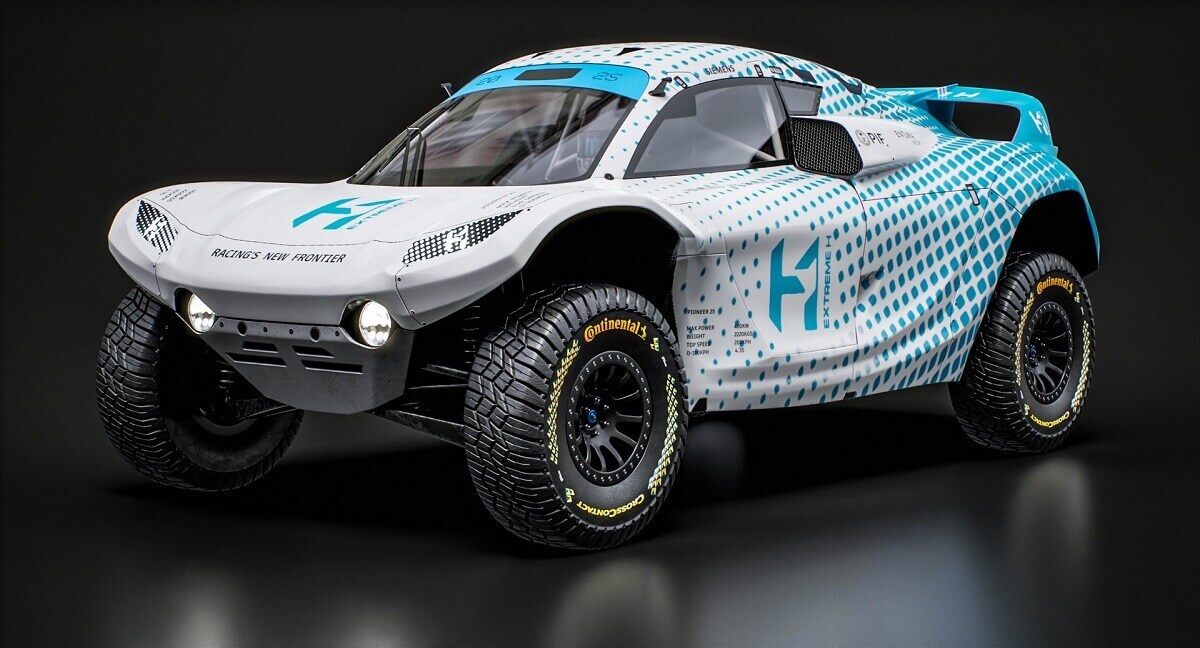
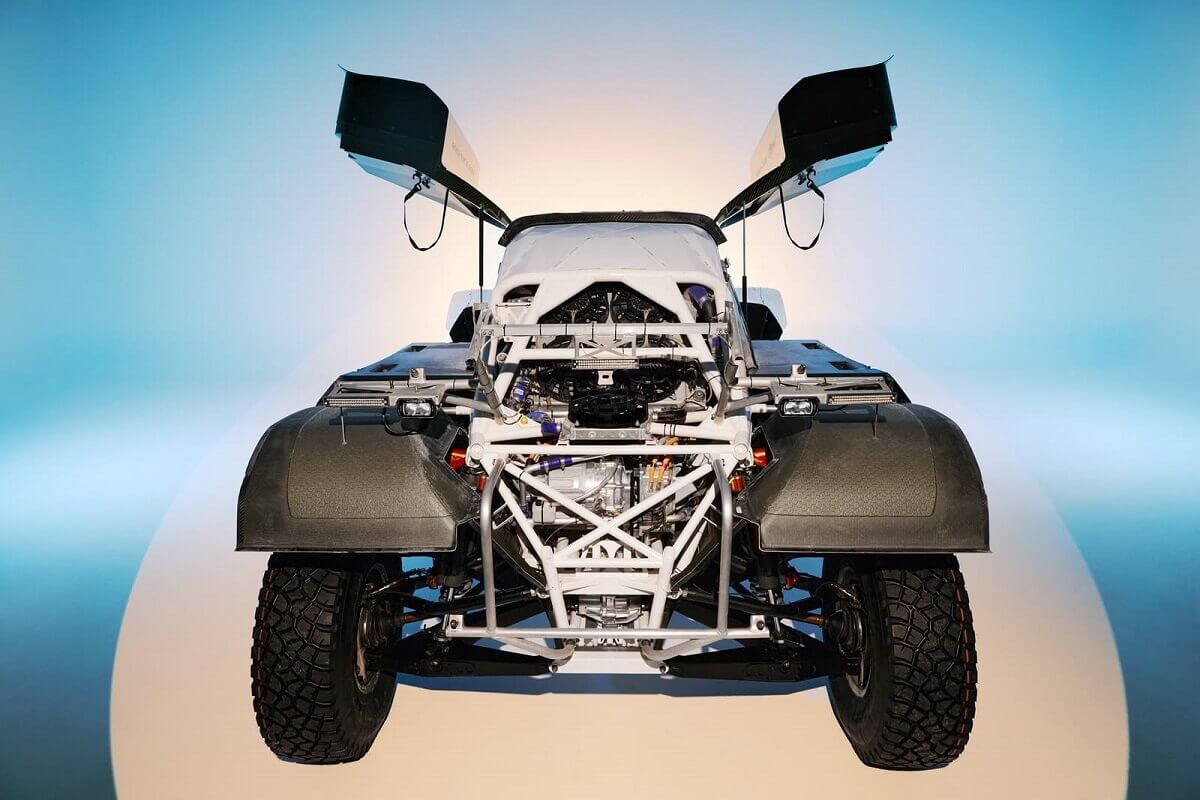
🔎 Looking for a buggy? Browse our off-road classifieds.
Goodwood 2025: the big public premiere
The Pioneer 25 will make its official public debut at the Goodwood Festival of Speed, from July 10 to 13, 2025. Each day, it will climb the famous "hill" (relatively speaking—about 90 meters of elevation gain) over 1.86 km and remain on display in the Future Lab with its hood removed so spectators can see the fuel cell and H₂ tanks.
This return to Goodwood is symbolic: in 2019, Extreme E unveiled the electric Odyssey 21 there (see photo below); six years later, the series presents its second zero-emission generation 👍
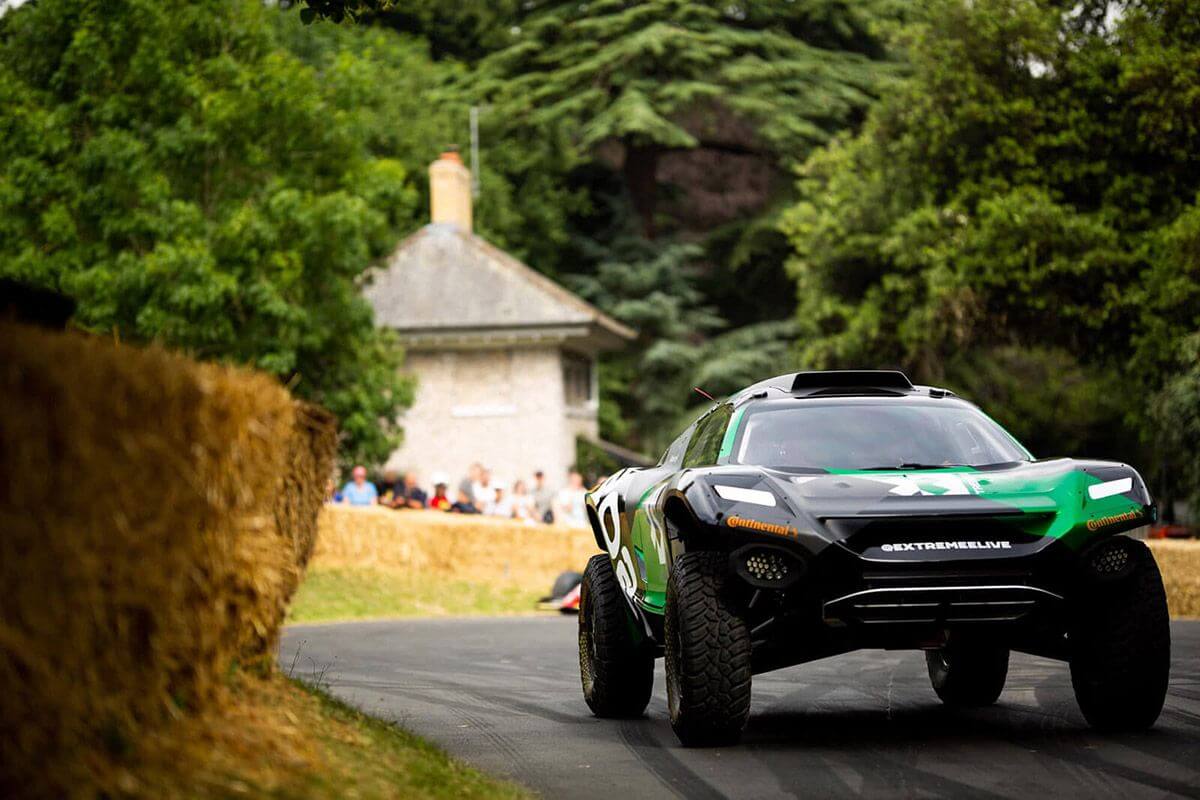
From Extreme E to Extreme H: why switch fuels?
The limits of 100% battery recharging
In Extreme E, each ODYSSEY 21 uses a 54 kWh Williams battery. A two-lap stint (~20 km) drains it by over 80% 🥵
Between races, the buggy is plugged into AFC Energy’s 40 kW hydrogen charger. However, the battery tolerates only moderate charging under high heat. The result: about 90 minutes to go from 10% to 100%, plus 10 extra minutes to balance the 3,600 internal cells. This long downtime is precisely what the switch to the onboard fuel cell aims to eliminate in Extreme H, where a hydrogen refill takes only a few minutes 👌
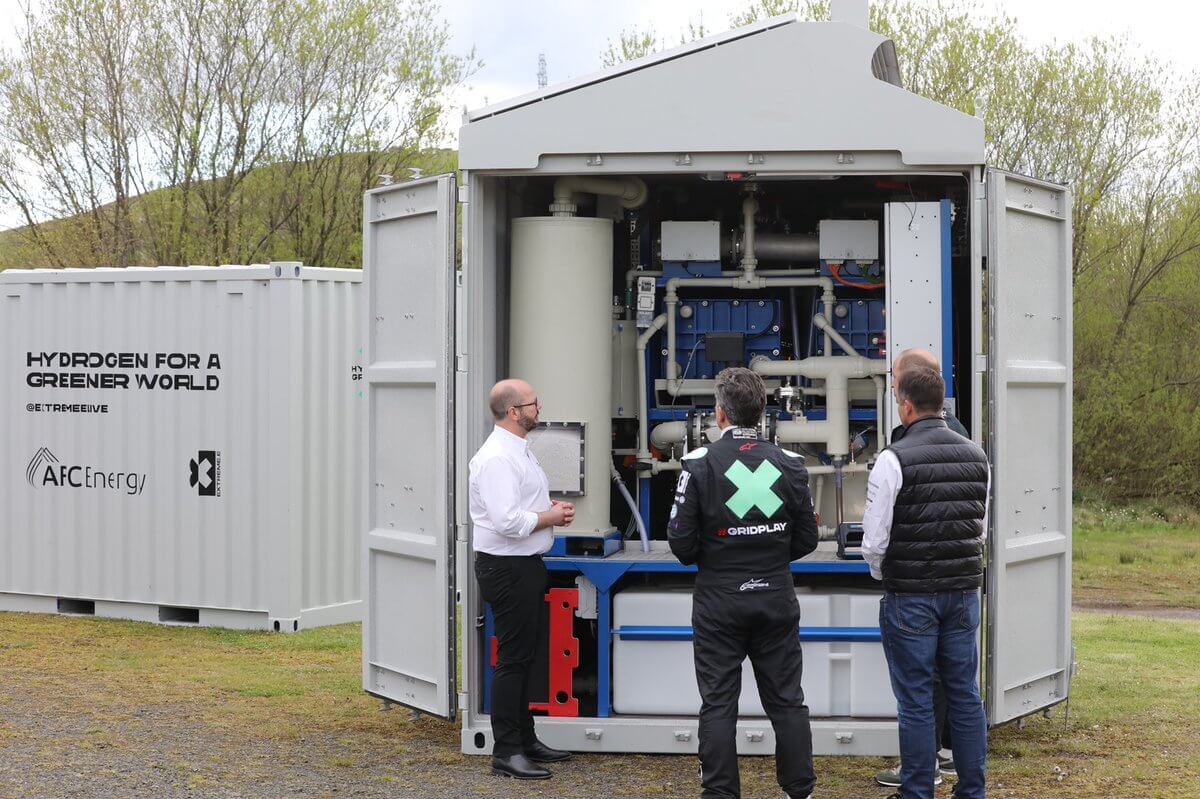
What changes with onboard hydrogen
In Extreme H, the buggy carries its own power plant: a fuel cell installed behind the driver. The hydrogen is stored in two 700-bar tanks (that’s seven hundred times atmospheric pressure), and the cell combines it with oxygen from the air to generate electricity for the motors, releasing only a fine cloud of water vapor 💦
When the tanks are nearly empty, refueling is like filling up with gasoline: a high-pressure nozzle locks in place, two to three minutes are enough to bring the fuel back up to pressure, and the car can immediately drive off again. No more long recharging times imposed by the battery of the old Extreme E 🥳
Yes, you still need a station… but a lighter one
During the Extreme E era, the paddock electricity came from the H-Power generator supplied by AFC Energy: an alkaline fuel cell combined with a battery pack, powering buggy recharging and the TV infrastructure.
For the switch to Extreme H, the organization is changing both technology and partner. It is adopting the GeoPura HPU2, tested in spring 2025 at the Siemens Energy site in Newcastle. More compact than the first-generation GeoPura unit (HPU1), the HPU2 delivers 500 kW continuous and can operate standalone or with a small buffer battery to smooth demand peaks. Running at full capacity 24/7, a single container could power the equivalent of about 1,200 British homes.
ℹ️ On-site, the HPU2 recharges standardized high-pressure bottles; these cylinders are then used to refuel the buggies. The goal: to power the entire paddock (pits, screens, broadcast, timing...) without using any diesel generators. ⛽
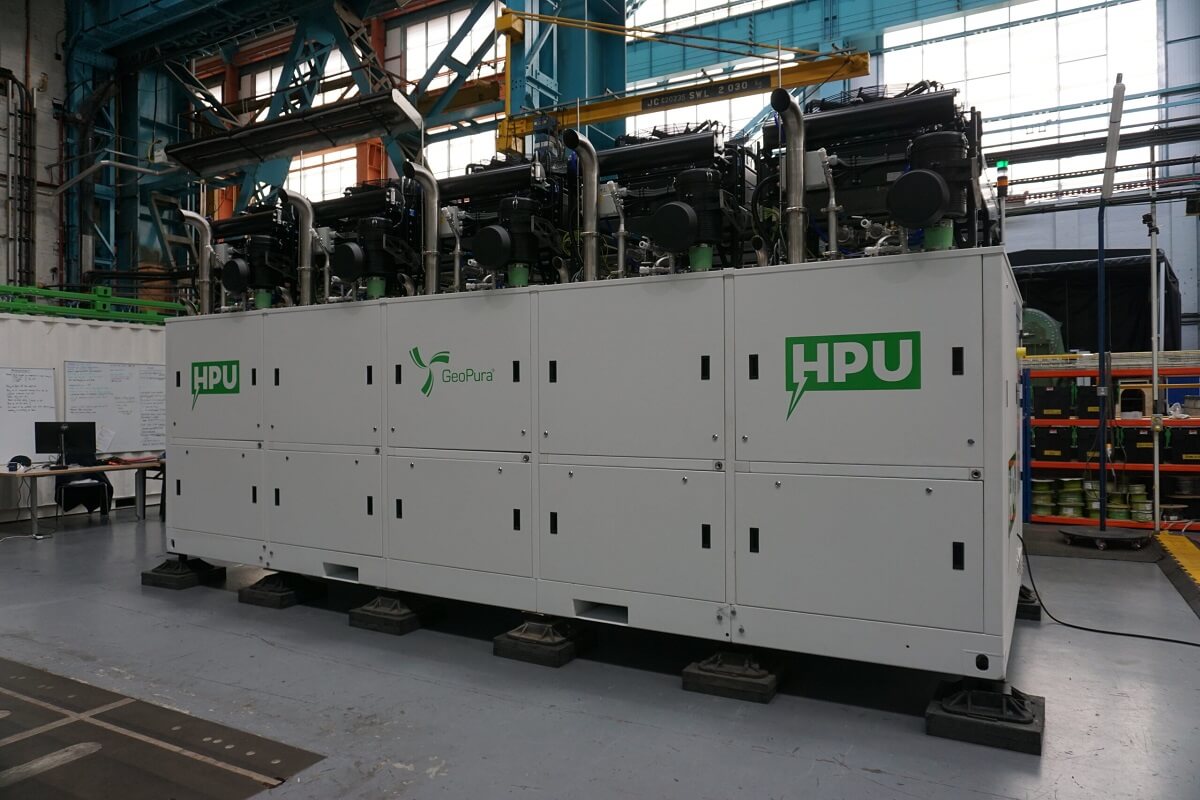
Sporting and industrial interest
From a sporting perspective, hydrogen refueling takes hardly longer than a gasoline fill-up; the race can therefore run its heats without the long downtimes that disrupted TV broadcasts in the 100% battery era 😎👍
Logistically, all the energy is produced or stored on-site: the FIA wants to prove that it is possible to organize a rally-raid far from any infrastructure without using a single fossil generator. And the industrial interest is clear: from 2026, the regulations will allow manufacturers to install their own fuel cell on the Spark chassis.
Extreme H aims to become a full-scale laboratory capable of attracting manufacturers like Toyota, Hyundai, or any other fuel cell specialist, without triggering the budget explosion that usually comes with a fully open formula: only the exterior design remains customizable. Teams can modify the hood, fenders, and lights to evoke a production model and assert their visual identity, while the chassis, transmission, and hydrogen systems remain common to all.
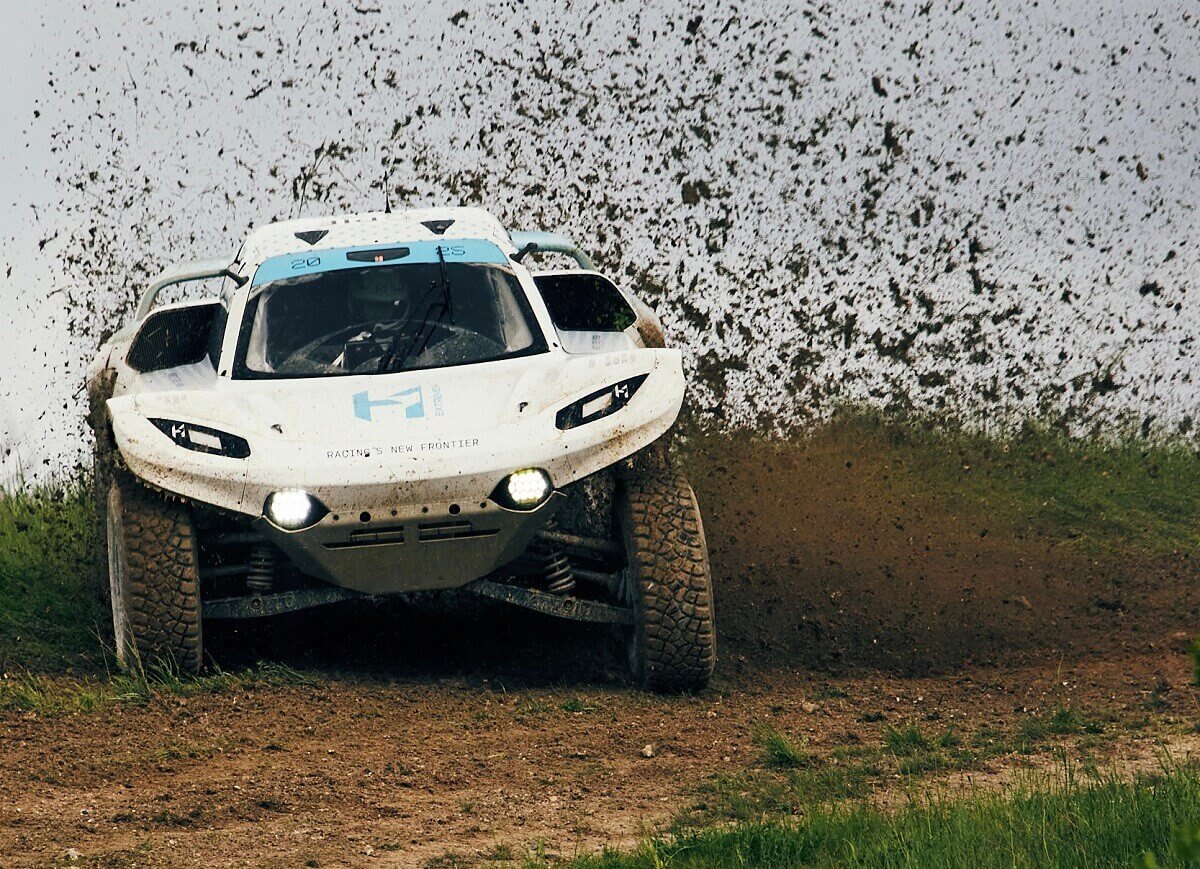
A shortened 2024 season that upset some fans
Extreme E sacrificed its last two 2024 rounds to speed up the transition: completing crash tests of the Pioneer 25, training marshals on high-pressure procedures, and validating the HPU2 station in real conditions. This forced pause unlocked the FIA World Cup 2025 homologation—but it also left fans wanting more: the 2024 season featured only four X Prix, depriving the remaining teams of a suspenseful finish and cutting partner exposure. On social media, many called it a “discount edition” and are now wondering whether the 2025 grid will indeed exceed the eight cars required by the FIA 😏
XXL test program: dust, rocks, extreme heat
Spark Racing Technology developed ten Pioneer 25s during a test program described as “equivalent to three racing seasons.” Public test runs took place on the rough tracks of Fontjoncouse (Aude) and then on the stony, dusty stages of Sardinia, where Continental approved its dedicated 37-inch tire. FIA structural crash tests (side impact and rollover) were passed in September 2024; hydrogen safety testing wrapped up in May 2025, the final step before World Cup homologation 😎
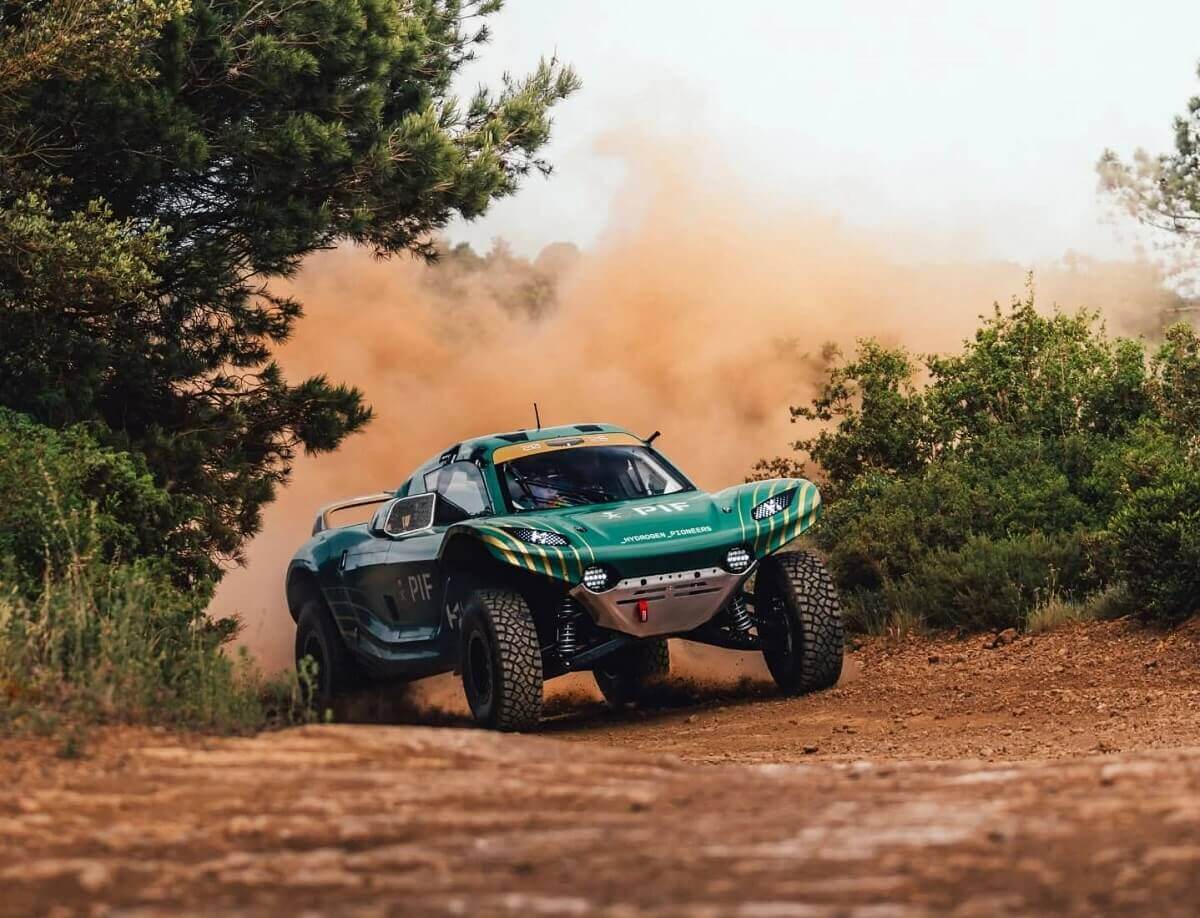
Extreme H 2025: cautious confirmations, major withdrawals, and a headache to fill the grid
To date, only two teams have officially committed to Extreme H:
- Veloce Racing: the British outfit announced its entry in February 2025, becoming the very first squad certified “World Cup.” Veloce has not yet named its driver duo, but the most likely option remains the 2023 Extreme E champion pairing Molly Taylor / Kevin Hansen, already seen driving the Pioneer 25 in official tests.
- SUN Minimeal Team: the Swiss team confirmed it would follow the hydrogen transition with its all-Scandinavian crew Timo Scheider / Klara Andersson.

Two heavyweights, however, are bowing out:
- Rosberg X Racing (RXR)—double Extreme E champion—will close its doors at the end of 2024, saying the series is losing its “full EV” DNA and fearing a shrinking grid.
- X44—Lewis Hamilton’s team, crowned in 2022—left the championship as early as February 2024, even before the official Extreme H calendar announcement.
Behind the scenes, McLaren, Andretti Altawkilat, JBXE (Jenson Button), and Legacy Motor Club are still in talks with the promoter but have made no public commitments... Remember, the FIA requires a minimum of eight cars to validate the grid.
If other seats are not confirmed by late summer 2025, the number of entrants could look thin to broadcasters, a topic fans are already discussing online.
The promoter hopes the planned technical opening for 2026 (allowing manufacturers to homologate their own fuel cell) will convince brands like Toyota, Hyundai, or suppliers like Bosch and Symbio to join the show 🎉
ℹ️ Recall that Extreme E has already attracted true motorsport stars: Sébastien Loeb (X44), Carlos Sainz Sr. (Acciona), Mattias Ekström (ABT Cupra), Jenson Button (JBXE), and world rallycross champion Johan Kristoffersson. Seeing that caliber of driver join the hydrogen grid could give Extreme H the media impact it still lacks.
Calendar: still “to be confirmed” even though it’s already July 2025
The promoter initially talked about a season start in Saudi Arabia “sometime in April.” Yet here we are, mid-July 2025: no official rounds, only a few demos, including the Pioneer 25 hillclimb at Goodwood.
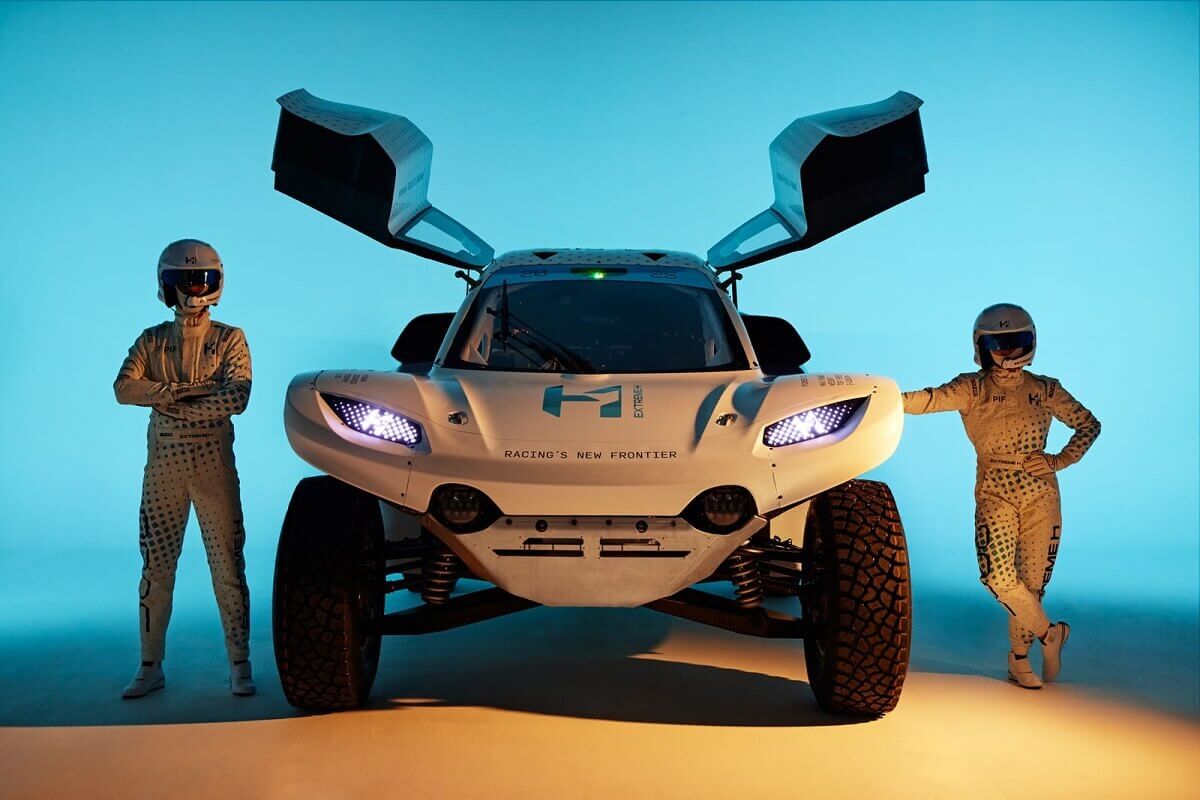
Why the delay?
- FIA homologation completed late: the Symbio fuel cell and 700-bar tanks only passed final crash tests in May; without this approval, no firm calendar could be issued.
- HPU2 hydrogen station still in shakedown: GeoPura and Siemens Energy validated full power output in June, but “high pressure” marshal training won’t be certified until August.
- Incomplete grid: the FIA requires at least eight cars; so far only Veloce and SUN Minimeal are registered. McLaren, Andretti, JBXE, and Legacy are still discussing budgets and drivers.
- TV scheduling conflicts: Formula E and WRC slots are locked until the summer break; launching the season amid that media traffic jam wouldn’t help anyone.
The result: the “April–October” window is shifting to September–December 2025, still with five unconfirmed rounds (Saudi Arabia, United Kingdom, Germany, Italy, United States).
Where does Extreme H fit in the zero-carbon landscape?
For a decade, the FIA has explored several “zero-emission” paths, each in a different discipline: Formula E has fielded electric single-seaters in city centers since 2014; ETCR, later eTCR, applied the same battery technology to touring cars on permanent circuits; RX2e electrifies sprint rallycross with its spectacular jumps. Extreme H will be the first FIA championship with hydrogen fuel cells off-road. City, circuit, rallycross… and now hydrogen off-road: the Federation thus completes its array of energy laboratories 🧪
Other hydrogen initiatives illustrate this momentum: Ligier Automotive has presented the JS2 RH2, the H2 version of its JS2 R; the ACO continues the MissionH24 program to field a hydrogen prototype at the 24 Hours of Le Mans; and GCK Motorsport, led by Guerlain Chicherit, has developed the GCK e-Blast H2 buggy for the Dakar. All these projects show that motorsport now sees hydrogen as a strategic experimentation platform 🤓
Doubts, criticism… and opportunities
Some fans already lament the loss of the “100% electric” identity: “Switching to hydrogen is extending a hand to the oil companies,” they write on forums. Others highlight the paradox of trying to “save the planet” by racing big SUVs in some of the last untouched deserts or forests; the concept, they say, may not appeal to everyone. Finally, the grid size is a concern: “Eight cars max—that’s barely enough to keep viewers watching.” The category’s still-confidential nature also leaves many enthusiasts skeptical. The promoter is counting on the novelty effect, the promise of quick refueling, and the arrival of major manufacturers to ease these reservations. The FIA World Cup label and the Goodwood hillclimb demonstration are meant to serve as a media launch pad.
Conclusion
The calendar still needs to be finalized, the grid filled out, and skepticism dispelled. But if the fuel cell withstands the shocks and the HPU2 unit really powers the entire paddock without a drop of diesel, Extreme H could become the showcase the hydrogen sector has been waiting for. Next stop: the Saudi opening—we’ll see if water vapor can thrill as much as a V8 roar… or a battery’s whistle 🙂
➡️ More information on the official FIA Extreme H website

